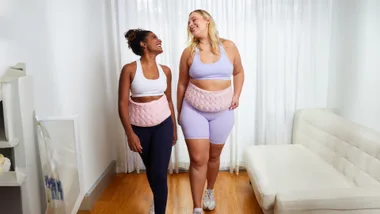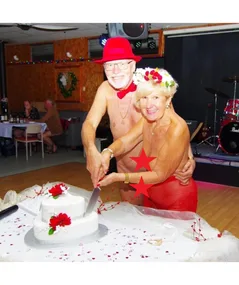MEASUREMENTS
These garments are designed to be a generous fit.
**MATERIALS
**
**BOY’S OR GIRL’S SWEATER
BACK**
Using 4.00mm Needles, cast on 82 (90-98) sts.
Knit 5 rows garter st (1st row is wrong side). **
Work in stocking st until work measures 27 (30-32) cm from beg, ending with a purl row.
SHAPE RAGLAN ARMHOLES – Cast off 2 (2-3) sts at beg of next 2 rows … 78 (86-92) sts.
Dec one st at each end of next row, then in every foll alt row until 28 (38-34) sts rem, then in every row until 26 (28-32) sts rem.
Leave rem sts on a stitch-holder.
FRONT
Work as for Back to **.
For Girl’s version – Work in stocking st until work measures 27 (30-32) cm from beg, ending with a purl row.
For Boy’s version – Work in stocking st until work measures 7 (8-9) cm from beg, ending with a purl row.
Beg feature hole patt – 1st row – K63 (71-79), K2tog, M1, sl 1, K1, psso, K15 …81 (89-97) sts.
2nd row – P15, P1tbl, P1, P1tbl, P63 (71-79).
3rd row – K62 (70-78), K2tog, K1, sl 1, K1, psso, K14 … 79 (87-95) sts.
4th row – P14, P1tbl, P1, P1tbl, P62 (70-78).
5th row – K61 (69-77), K2tog, K1, sl 1, K1, psso, K13 … 77 (85-93) sts.
6th row – P13, P1tbl, P1, P1tbl, P61 (69-77).
7th row – K60 (68-76), K2tog, K1, sl 1, K1, psso, K12 … 75 (83-91) sts.
8th row – P12, P1tbl, P1, P1tbl, P60 (68-76).
9th row – K59 (67-75), K2tog, M1, K1, M1, sl 1, K1, psso, K11 … 75 (83-91) sts.
10th row – P11, P1tbl, P3, P1tbl, P59 (67-75).
11th row – K59 (67-75), K1tbl, K3, K1tbl, K11.
12th row – P11, P1tbl, P3, P1tbl, P59 (67-75).
Rep 11th and 12th rows once.
15th row – K59 (67-75), M1, K1tbl, drop next st on left hand needle off needle and leave, K1, drop next st on left hand needle off needle and leave, K1tbl, M1, K11.
16th row – P12, P1tbl, P1, P1tbl, P60 (68-76).
17th row – K60 (68-76), M1, K1tbl, K1, K1tbl, M1, K12 … 77 (85-93) sts.
18th row – P13, P1tbl, P1, P1tbl, P61 (69-77).
19th row – K61 (69-77), M1, K1tbl, K1, K1tbl, M1, K13 … 79 (87-95) sts.
20th row – P14, P1tbl, P1, P1tbl, P62 (70-78).
21st row – K62 (70-78), M1, K1tbl, K1, K1tbl, M1, K14 … 81 (89-97) sts.
22nd row – P15, P1tbl, P1, P1tbl, P63 (71-79).
23rd row – K63 (71-79), M1, K1tbl, drop next st on left hand needle off needle and leave, K1tbl, M1, K15 … 82 (90-98) sts.
24th row – P16, P2tbl, P64 (72-80) … thus completing feature hole patt.
NOTE – With your fingers, gently unravel the sts dropped off needle, these sts will stop unravelling at the original point that they were introduced (at the M1).
Cont in stocking st for rem, until work measures 27 (30-32) cm from beg, ending with a purl row.
SHAPE RAGLAN ARMHOLES (for both versions) – Cast off 2 (2-3) sts at beg of next 2 rows … 78 (86-92) sts.
Dec one st at each end of next row, then in every foll alt row until 44 (52-54) sts rem.
Work 1 row.
DIVIDE FOR FRONT OPENING – 1st row – K2tog, K17 (21-22), yfwd, K2tog,
K1 (eyelet hole), turn.
Cont on these 21 (25-26) sts.
2nd row – K2, purl to end.
3rd row – K2tog, knit to end … 20 (24-25) sts.
4th row – As 2nd row.
5th row – K2tog, knit to last 3 sts, yfwd, K2tog, K1 (eyelet hole) … 19 (23-24) sts.
6th row – As 2nd row.
7th row – K2tog, knit to end … 18 (22-23) sts.
- SHAPE NECK – Next row – Cast off 6 (7-8) sts, purl to end … 12 (15-15) sts.
Next row – K2tog, knit to end … 11 (14-14) sts.
* Dec one st at armhole edge in alt rows 3 (2-5) times, then in every row 1 (5-1) time/s, AT SAME TIME dec one st at neck edge in every row 5 (5**-6) times … 2 sts.
Next row – K2tog. Fasten off. ***
Join yarn to rem sts, K1, K2tog, yfwd (eyelet hole), knit to last 2 sts, K2tog … 21 (25-26) sts.
Cont on these 21 (25-26) sts.
1st row – Purl to last 2 sts, K2.
2nd row – Knit to last 2 sts, K2tog … 20 (24-25) sts
3rd row – As 1st row.
4th row – K1, K2tog, yfwd (eyelet hole), knit to last 2 sts, K2tog … 19 (23-24) sts.
5th row – As 1st row.
6th row – As 2nd row … 18 (22-23) sts.
7th row – As 1st row.
SHAPE NECK – Cast off 6 (7-8) sts at beg of next row, knit to last 2 sts, K2tog … 11 (14-14) sts.
Rep from to .
SLEEVES
Using 4.00mm Needles, cast on 45 sts.
1st row – P6, (K1, P1) 3 times, K1, P6, rep from to end.
2nd row – K6, (P1, K1) 3 times, P1, K6, rep from to end.
Rep 1st and 2nd rows 8 times … 18 rows rib in all.
Work 6 rows stocking st.
25th row – K2, M1, knit to last 2 sts, M1, K2 … 47 sts.
Cont in stocking st (beg with a purl row), inc one st (as before) at each end of every foll 8th (8th-10th) row until there are 53 (49-59) sts, then in foll 10th (10th-12th) row/s until there are 57 (59-61) sts.
Cont without shaping until work measures 28 (33-38) cm (or length desired) from beg, ending with a purl row.
SHAPE RAGLAN – Cast off 2 (2-3) sts at beg of next 2 rows … 53 (55-55) sts. Dec one st at each end of next row, then in every foll 4th row until 45 (45-37) sts rem, then in alt rows until 9 (11-13) sts rem.
Work 1 row.
Leave rem sts on stitch-holder.
NECKBAND
Using wool needle and back-stitch, join raglan seams noting that tops of sleeves form part of neckline. With right side facing and using 3.25mm Needles, knit up 14 (17-20) sts evenly along right side of neck, knit across sts from right sleeve stitch-holder, knit across sts from back stitch-holder, knit across sts from left sleeve stitch-holder, then knit up 14 (17-20) sts evenly along left side of neck … 72 (84-98) sts.
1st row – Knit.
2nd row – K1, K2tog, yfwd (eyelet hole), knit to last 3 sts, yfwd, K2tog (eyelet hole), K1 … 6 eyelet holes in all.
Knit 3 rows garter st.
Cast off loosely knitways.
MAKE UP
With a slightly damp cloth and warm iron, press lightly on wrong side. Using wool needle, sew in all ends. Using wool needle and back-stitch, join side and sleeve seams. For Boy’s version – Using 2 strands of yarn, make a twisted cord 75 cm long and thread through eyelet holes on front opening. For Girl’s version – Thread leather thonging through eyelet holes on front opening. For both versions – Using wool needle, work blanket stitch around lower edge of Back, Front and Sleeves as pictured. Press seams.
Pattern supplied by Patons, freecall 1800 333 642.
Newsletter conversion description. Get the latest in your inbox.



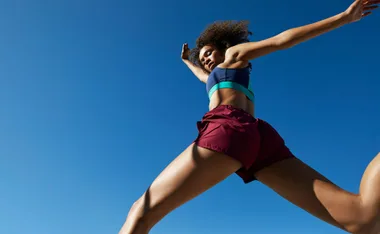










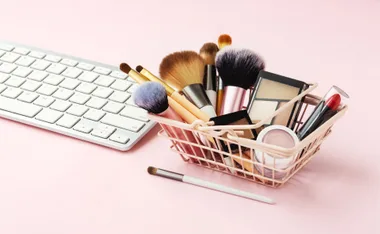


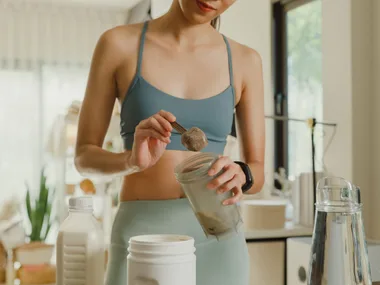

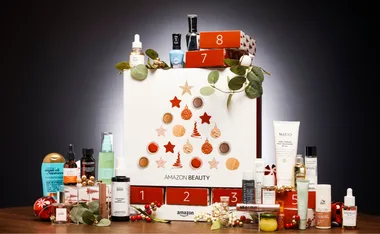









.png?resize=380%2C285)
.jpg?resize=380%2C285)



.png?resize=380%2C285)



